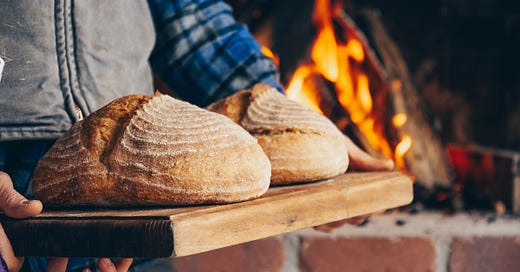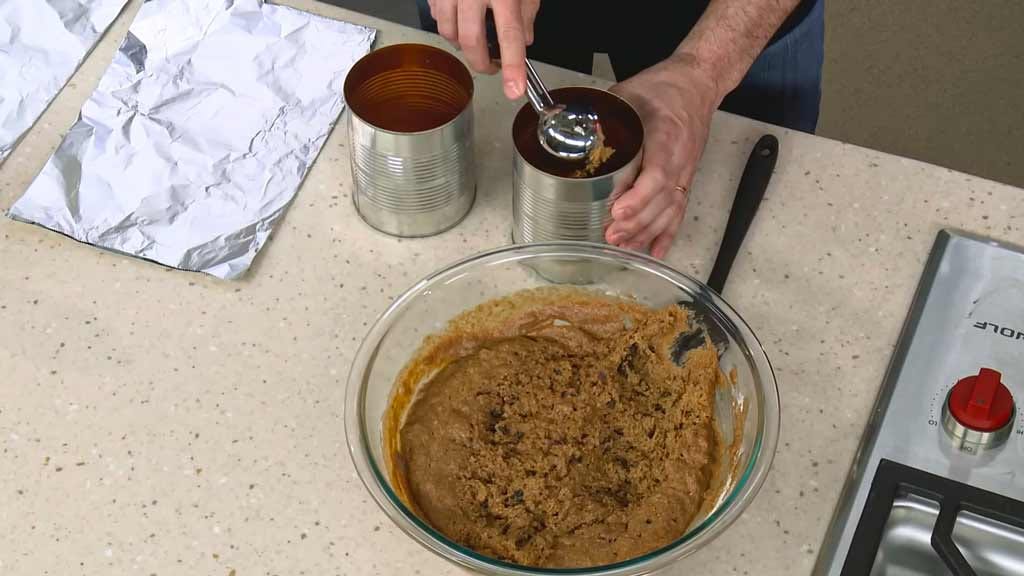I’ve been curious about the history of this recipe since I first scanned Nana’s recipe collection back in September. Based on the title alone, I had a feeling that this recipe was likely passed down through the generations and a product of necessity - packing as many nutrients and fibers into, what seems to be, a very dense loaf.
We’ll be in the full swing of preparing to move apartments over the next couple of weeks and my meal plans are primarily centered around what can I make to reduce the pantry items that need to be moved, so this time, I didn’t bake this one personally. Regardless, I thought I’d share the recipe in case others were interested in having a high fiber, nutrient rich loaf (or rolls?) for their family gatherings later this month. The recipe title also felt incredibly on-par with Thanksgiving and I couldn’t pass up the timing. If you do make this recipe, I’d love to hear how it turned out.
Let’s get to it🤎
Nana’s Recipe
Ingredients
1/2 cup yellow corn meal
1/3 cup brown sugar
1 tablespoon salt
2 cups boiling water
1/4 cup oil
2 pkg yeast + 1/2 c lukewarm water
3/4 cup stirred whole wheat flour
1/2 cup stirred rye flour
4 1/4 to 4 1/2 cups sifted all purpose flour
Method
Combine corn meal, brown sugar, salt, oil, & boiling water. Cool to lukewarm. Dissolve yeast in 1/2 cup warm water - add to corn mixture. Add whole wheat & rye flour - stir in white flour to make moderate dough. Rise to double in bulk. Mix dough & pour in 2 loaf pans. Let rise again & bake 400° for 40 minutes.
From Steamed Bread to a Radio Recipe Show
With a name like early colonial bread, the recipe origins had to stem from early colonial times in the United States, right? And so I dove into early colonial cuisine of the Thirteen Colonies.
According to a Wikipedia article (where all good research begins), in New England, most colonists dined on baked beans and “pease porridge” (a type of yellow split pea porridge or pudding that resembles a chunky refried bean consistency) with a coarse, dark bread. This bread was first made with a mixture of wheat and corn, but after a disease called wheat rust struck their wheat crops in the 1660s, they shifted to baking this with rye and corn.
There was also a staple dark bread that emerged in Boston around this time period called Boston Brown Bread. This bread was made with a combination of flours including cornmeal, rye, whole wheat, and molasses and was steamed or baked in metal tins over an open fire. Molasses acted as a preservative to make the bread more durable for the harsh conditions of the time.
Nana’s recipe didn’t include instructions for kneading the bread, and the above recipe picture for Boston Brown Bread shows the consistency as more of a thick cake or loose cookie dough batter that could be scooped into pans. However, the fact that Nana’s recipe includes “rise to double in bulk” indicates kneading was likely involved and the final batter/dough would have been thicker than Boston Brown Bread.
Perhaps over time cooks began to swap out ingredients of the traditional Boston Brown Bread to create a thick dough and to adapt it for current pantry staples. For example, exchanging the molasses (which would create a looser, stickier batter) for brown sugar and incorporating additional flours.
Boston Brown Bread has an even mixture of flour types (i.e., 1 cup of whole wheat, 1 cup of rye, 1 cup of cornmeal) compared to Early Colonial Bread. In addition, the use of baking soda and buttermilk over water would have created a much looser dough than Early Colonial Bread. Regardless, there are similarities and it would make sense that the early creation of Boston Brown Bread eventually morphed into Early Colonial Bread.
At this point in my research, I hadn’t found any early versions of the Early Colonial Bread recipes to pinpoint when cooks might have began writing down this version. I just had a lot of speculation. There honestly weren’t many cookbooks that contained a copy of this recipe that matched Nana’s version (and others I found on the internet) close enough for me to consider it an early version.
I found one copy of the recipe with very similar ingredients in the More Hoosier Cooking cookbook from 1994, which had some earlier publication issues in the 1970s. Hoosier cuisine originated from the Midwest, specifically Indiana, and includes cultural influences from German, English, Native American, and Amish foods. With these roots, we can speculate that Early Colonial Bread may have emerged from this area of the U.S., potentially by individuals that migrated from Boston to Indiana, and blended their culinary history with the regional cuisine.
Outside of this cookbook, I found an early publishing of this recipe in The Open Line Bulletin which is hosted by Monticello, Iowa’s internet service provider NetConnect. Upon further research, it seems like this came from a radio recipe show called The Open Line that aired in Iowa from 1963 to 2001. Their version of the bread was called Judy Jardines Early Colonial Bread which aired in March/April of 1982.
While I didn’t pay for access to confirm, the Google summary paragraph for this newspaper issue from May 26th, 1976 from Hubbard News in Hubbard, Ohio also seems to include similar ingredients as Nana’s Early Colonial Bread recipe, enough so that I’ll consider it another early documentation.
Overall, it seems that Early Colonial Bread may have been influenced by early colonial recipes like Boston Brown Bread, but was ultimately a product of the early to mid-1900s. Most of the recipe versions documented online and in classic cookbooks tend to be from the 1950s through 1990s. With such large gaps between documentation of the Boston Brown Bread and the Early Colonial Bread recipes, it’s hard to draw a clear line between the two and instead we’re left to speculation. Perhaps the recipe was published in a popular cookbook or magazine recipe subscription and Nana wrote it down. Maybe it was passed down from a family friend. Without clearer documentation, it’s hard to know the exact origin of Early Colonial Bread.
Thank you for supporting this project 🤎 If this post sparked any memories, I’d love to hear about them in the comments below. Any ideas for future post topics, historical context that I may have missed in my research, or oral traditions around cooking and baking that may be undocumented are also greatly appreciated.







